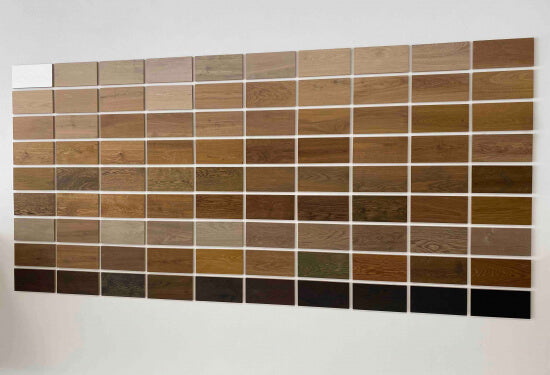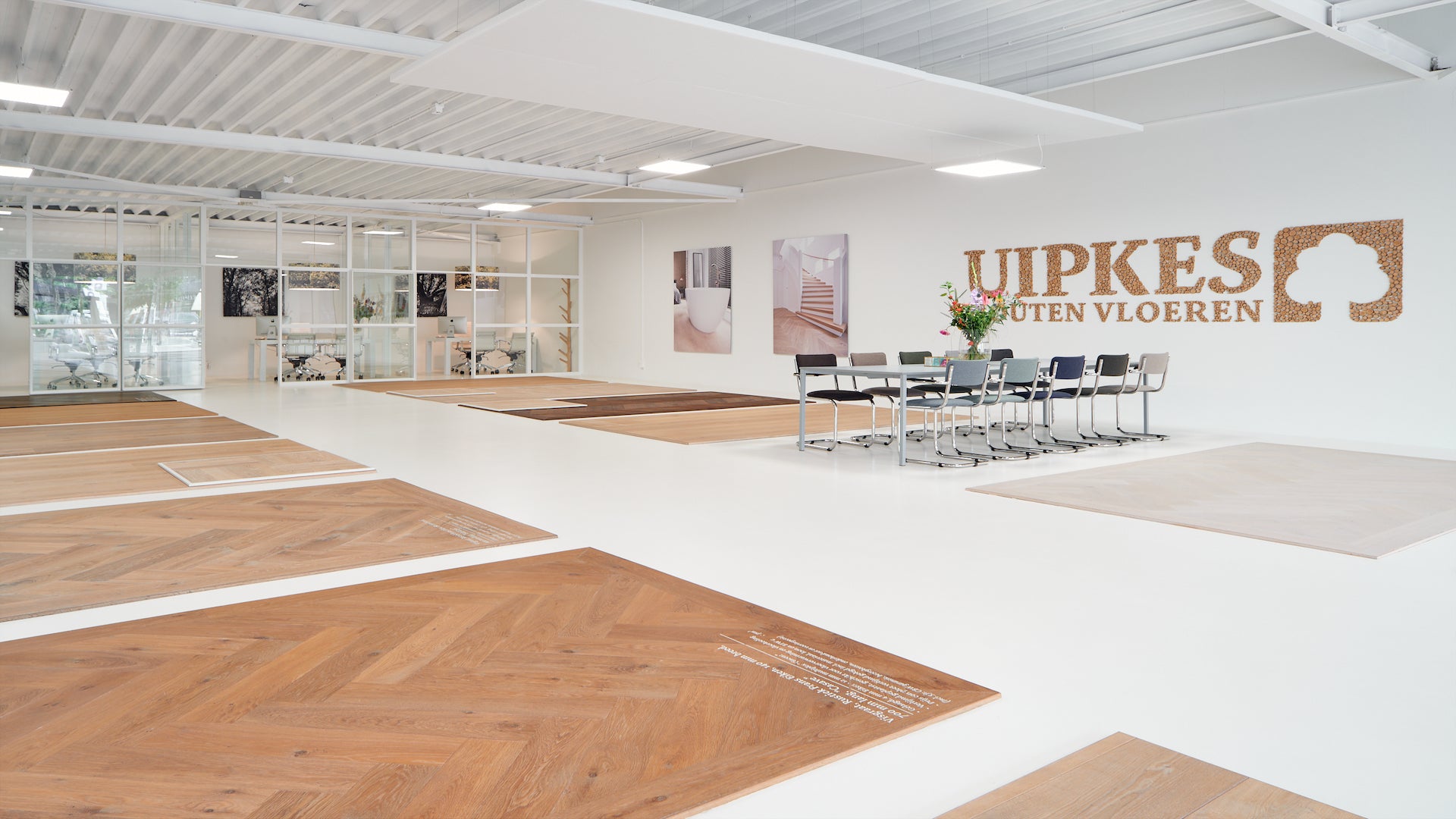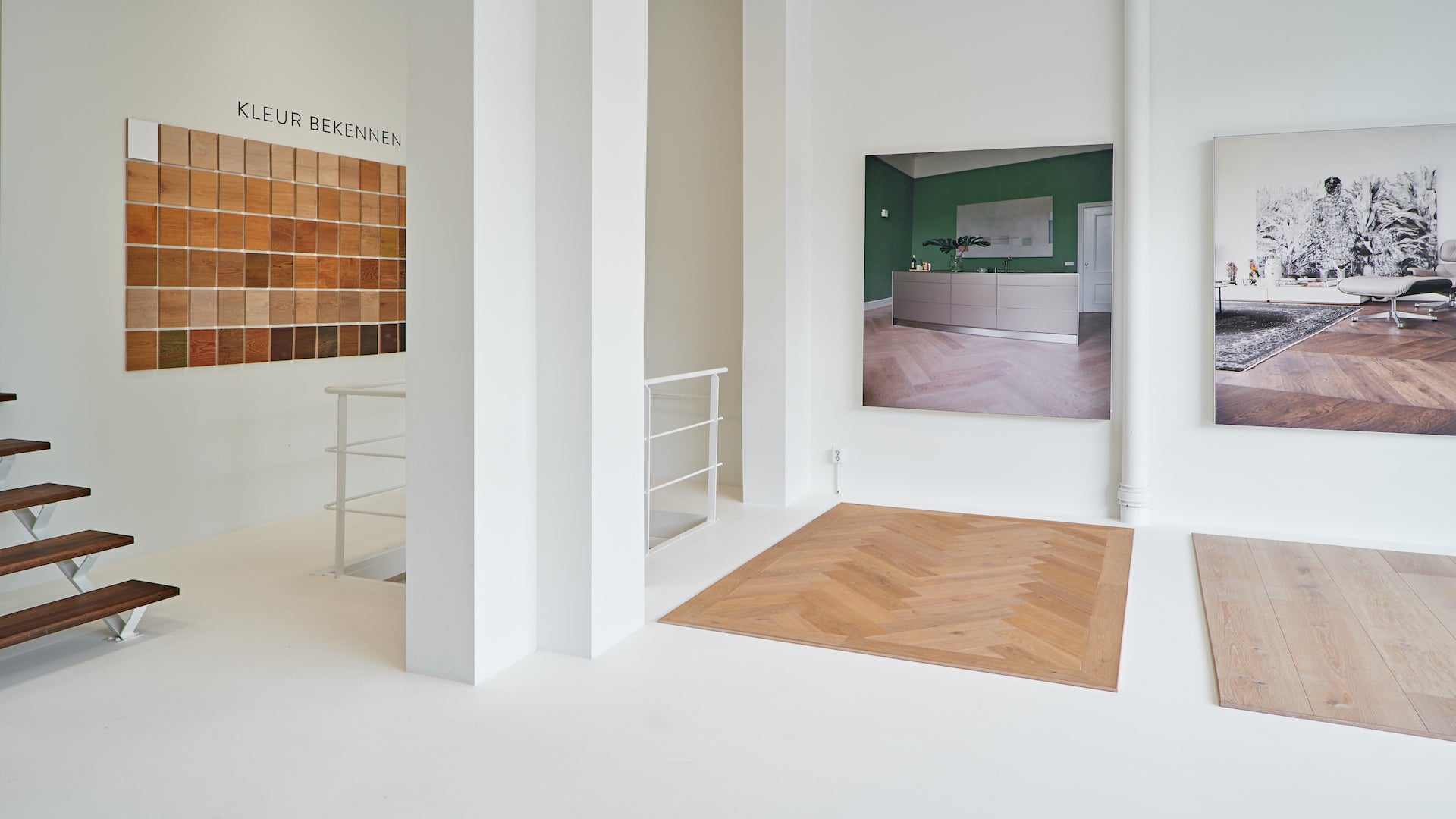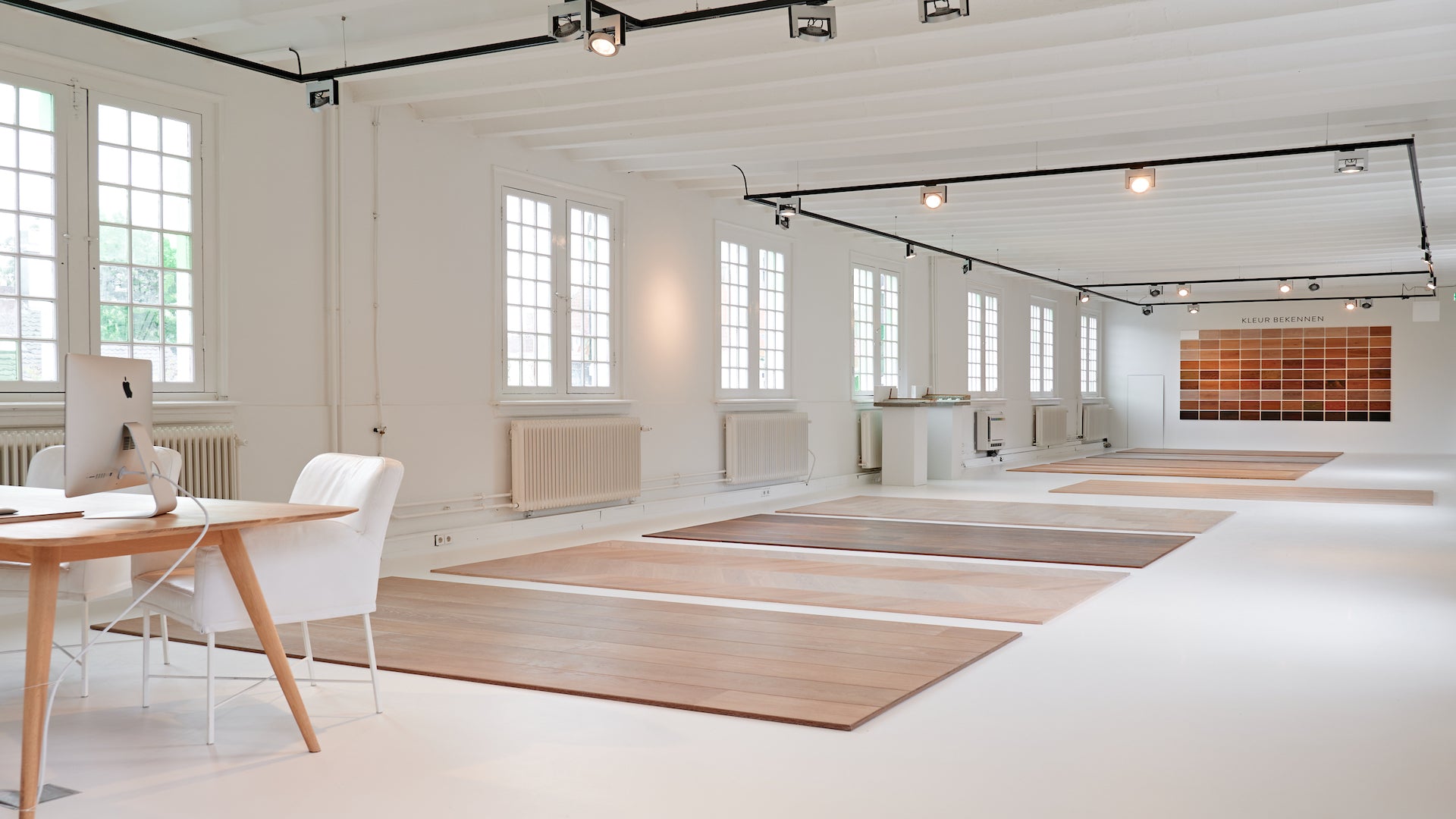Het uiterlijk van hout

Bezoek de showroom
In general, three main planes or sawing methods of the wood can be distinguished: the end plane, the radial plane and the tangential plane. The end surface is any surface that is perpendicular to the longitudinal axis of the trunk.
The radial plane is any vertical plane that passes through the long axis of the tree and through the center of the trunk. We also speak of quarters. Any plane that does not pass through the longitudinal axis of the tree, but is parallel to it, is the tangential plane. If the sawing is carried out in a tangential direction, we call it plain sawn wood.
Wire of wood
By the grain of the wood we mean the structure relative to the longitudinal axis of the tree. This is observed on the longitudinal plane. Different wire structures can be distinguished, namely; straight thread, cross thread, spiral growth, tangled thread, wavy thread and irregular thread.
Magazine vol inspiratie
Grain of wood
The term grain indicates whether the wood is divided into large or small elements. The nature of the grain is determined by the diameter of the vessels, the height and width of the rays, the cross-section of the fibers and the growth ring width. The following veins can be distinguished; a fine, a moderately fine, a moderately coarse and a coarse grain.

Brushes
Brushes are parts of branches enclosed by the trunk. These generally have their origin in the heart of the trunk and grow in thickness at the same time.
If the branch dies, the growth in thickness stops. If the branch breaks off close to the trunk, you will later find the part in the trunk as a solid brush. If the branch does not break smoothly along the trunk, you will find this part later as a loose brush.
Kom langs in:
Drawing of wood
The drawing of wood refers to the visible appearance of the wood which is the result of the different weaves together with the nature of the grain direction and grain.
Robijn, for example, has virtually no drawing. The wood is almost always straight-grained and has little color. Oak, ash, teak and cherry show a flame pattern on the tangential dosse surface.
Color of wood
The natural color of the wood of a particular tree species can change, not only between trees of the same species, but even within one trunk the color can differ. The color of the wood can change after the tree is cut down and after the wood is processed. The loss of moisture plays a role in this.
There are wood species where large changes in color occur under the influence of light. In addition to light, oxygen also affects the color. Light wood species become darker over time and dark wood species become lighter.
Lees alle informatie

Project lead time
To get an impression of the color and drawing of a particular wooden floor, you can use our color overview.
For customized color advice you can make an appointment in our showroom in Alphen aan den Rijn, Naarden Vesting or Amsterdam, where our employees can explain everything about the wood product and the floors we supply.


